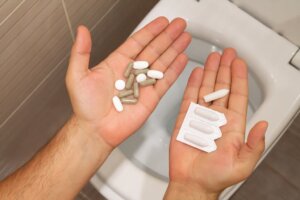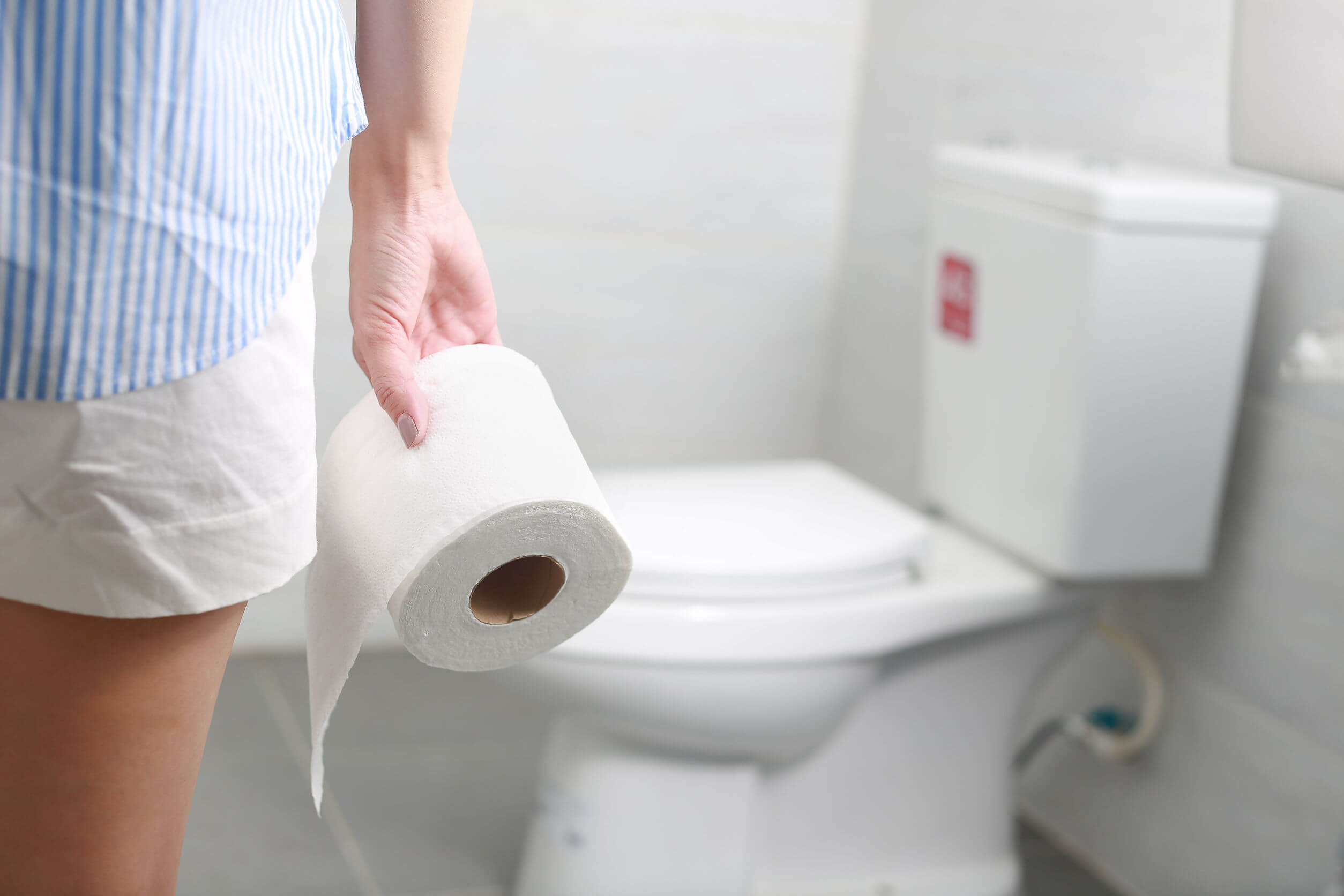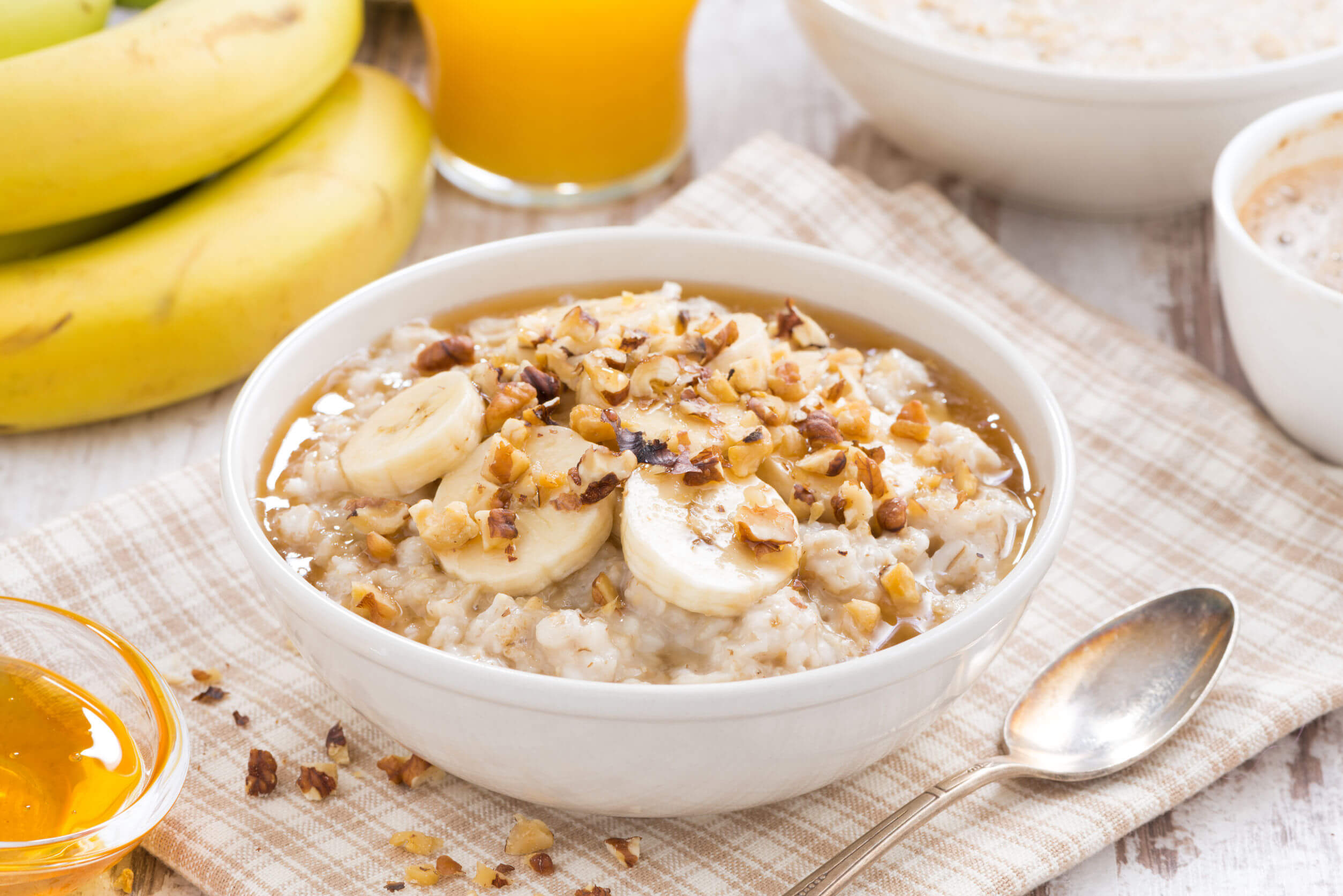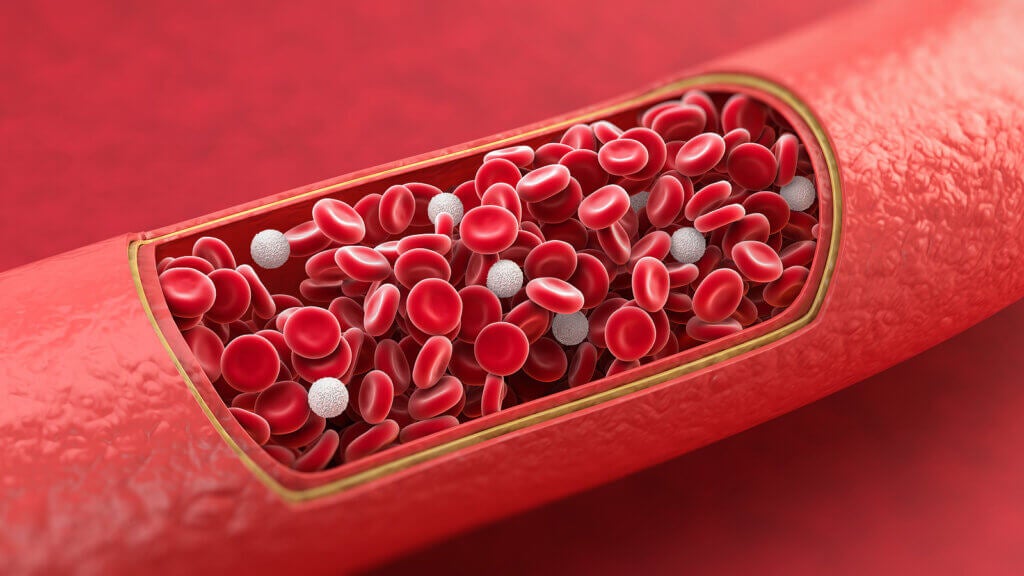The Different Types of Laxatives


Escrito y verificado por el biólogo Samuel Antonio Sánchez Amador
Constipation is a common problem in general society, affecting 2 to 20% of the population at any given time and place. Although it’s an acute and anecdotal problem in almost all cases, if it remains long-term, it can cause pain, bloating, and other very annoying symptoms. Fortunately, there are several types of laxatives that fight constipation.
There are over-the-counter laxatives and others that require a prescription, but it’s always best to consume them with caution and only for periods of up to one week. These drugs are very useful in some specific conditions, and knowing how to choose the specific type is essential to maximize their effects in each clinical condition. Keep reading, because we’ll tell you everything you need to know about this pharmacological group.
Laxatives and constipation

Before describing the types of laxatives and their uses, it’s important to briefly describe the condition for which they’re used. According to the United States National Library of Medicine, the term “constipation” refers to a gastrointestinal condition in which a person has 3 or fewer bowel movements a week, taking into account that it’s normal to go to the bathroom every day.
Epidemiology
The general prevalence of constipation is 20% of the general population, and the incidence of the condition increases greatly the older the age group analyzed is. In any case, it’s a more common situation in its acute and transitory variant, as chronic constipation (lasting more than 3 months) affects only 4.5% of the population, almost always women.
The global situation of constipation can be summarized in the following list:
- 12% of the world’s population suffers from constipation at any given time and place. This interval varies between 2 and 20% depending on the sources consulted.
- Chronic constipation accounts for 3% of pediatric office visits worldwide.
- In the United States alone, more than 4 million people suffer from constipation each year. This translates to more than 2.5 million visits to a GP.
- In countries like Spain, it’s estimated that 51% of people with chronic constipation lead a sedentary lifestyle and poor diet.
With all these figures, it’s easy to imagine why laxatives are used by a significant percentage of the adult population at some point in their life. Next, we’ll show you what these drugs are and the types that exist.
What are laxatives and how many types are there?
The Clínica Universidad de Navarra (CUN) defines laxative as “a substance that’s administered orally with a purgative action that facilitates defecation and that, therefore, can resolve constipation.” This condition should always be treated in the first instance with changes in diet and lifestyle, but if this doesn’t work, we resort to the drugs that concern us here.
Laxatives are often sold over the counter for your safety, but shouldn’t be used for long periods of time unless directed by a medical professional. Without going any further, the excessive use of some of them can cause dependence at the local level, as intestinal motility is reduced as the body becomes accustomed to their effect.
Before buying any type of laxative, we recommend that you go to your family doctor or trusted pharmacist and discuss with them all possible approaches, always going through changes in diet and promoting intestinal motility with exercise. Now that all this has been clarified, we’ll present you the types of laxatives that exist and their uses.
1. Contact laxatives or stimulants
As their name indicates, these drugs perform their laxative action by causing direct stimulation on the walls of the large intestine, especially in the region of the colon. They’re very effective in the short term, but as indicated by the Elsevier medical portal, they often cause problems if they’re abused.
This group of laxatives stimulates the myenteric plexus (located in the muscular tunica of the intestine) and the Auerbach plexus, which promotes the motility of the colon and its secretions towards the lumen. They also reduce the absorption of water at the intestinal level, which makes the stool softer and favors its excretion.
An example within this pharmacological group is bisacodyl, which specifically stimulates the nerve endings of the intestinal wall. Sodium picosulfate is another of the most widely used compounds on this front.
2. Bulk-forming laxatives
These laxatives don’t stimulate the intestinal wall per se, but rather retain fluids within the stool and increase its weight and consistency, thus facilitating its expulsion. Many of them are presented in the form of fiber supplements and should always be accompanied by a large intake of water, in addition to certain changes in the diet.
Fiber absorbs part of the water consumed by the person, which directly modifies the consistency of the stool. That’s why it’s very important to consume fluids in this type of treatment: Otherwise, the fiber would cause compaction and even more obstruction. This can translate into a severe blockage of the intestine, so you have to be careful.
Plant extracts of the genus Plantago (Psyllium) are the most common within this group. Dietary fiber, carboxymethylcellulose, and methylcellulose are other over-the-counter compounds that report the effects listed here.
3. Osmotic laxatives
Osmotic laxative agents have a method of action quite different from those already mentioned. As indicated by the Andalusian Society of Digestive Diseases (SAPD), these are non-absorbable molecules or ions that create an osmotic gradient, which increases or retains water in the intestinal lumen.
The increase in volume and hydration of the stool caused by this osmotic change favors its transport throughout the large intestine, which solves constipation. Two types of osmotic laxatives are classified according to how they work:
- The first group represents those laxatives that attract fluid into the intestinal lumen. Sorbitol, lactulose, and magnesium salts fall into this category.
- The second group includes drugs that retain the water that was administered simultaneously when ingested within the intestinal lumen. Polyethylene glycol (PEG) is the most famous in this category.
4. Lubricants
Some of these compounds aren’t considered laxatives from a pharmacological point of view, but they’re sometimes recommended to treat the milder phases or types of constipation. As their name suggests, they’re responsible for lubricating the stool, which favors its movement through the large intestine. Some of them are the following:
- Olive oil: Ingesting 50 to 60 milliliters of olive oil a day for 20 to 30 days can improve symptoms of constipation. In any case, it’s not recommended at all to start a routine with this natural remedy if it hasn’t been indicated by a professional.
- Paraffin: This lubricating compound is made up of a mixture of long-chain hydrocarbons. It acts on the digestive mucosa and prevents the stool from drying out and hardening, thus facilitating its evacuation. Experts recommend diluting the indicated dose in a glass of water and drinking the mixture in an upright position.
5. Prokinetic agents
Prokinetic agents are drugs used to improve intestinal transit, which happens by increasing the speed of emptying and the function of the sphincters. Within this group are some very famous drugs known to the general population, such as domperidone (used for dyspepsia), cisapride, metoclopramide, and cinitapride.
These drugs act as 5-hydroxytryptamine (serotonin) receptor agonists. They work with the intrinsic neurons of the intestinal tract, thus causing the release of acetylcholine and the secretion of mucous substances. While they can be very helpful, not all of them are recommended. As indicated by the Statpearls medical portal, cisapride has been withdrawn from the market due to its serious cardiovascular effects.
6. Surfactant laxatives (surfactants)
Quickly and simply put, surfactant laxatives lower the surface tension of fecal material. Therefore, they make it easier for water to enter the stool, hydrating it and also allowing fat or lipid from the lumen to “enter” it, which softens it even more.
Docusate sodium is one of the most widely used compounds within this group. It’s taken by mouth in the form of 250-milligram capsules and is used primarily in children older than 7 years as a method of preventing and relieving constipation. As in all the previous cases, it’s important to increase your fluid intake when consuming this laxative.
7. Volume-increasing laxatives
These laxatives swell by absorption of water in the intestine when they’re in the stool (they form mucilage), which causes them to increase in volume artificially. Because the fecal material is larger in diameter, they exert more pressure on the walls of the intestine, and peristaltic movements are promoted, which facilitates the movement of stool.
8. Natural fiber

Again, we’re referring to a group of substances that aren’t laxatives per se but have capabilities that are very similar to those of many of the compounds already mentioned. Instead of taking specific bulk-forming laxatives (which also contain fiber), you can choose to increase the amount of this compound in your diet naturally.
Some of the highest culinary ingredients with the most fiber are listed below:
- Fruits: Bananas, kiwis, raisins, unpeeled apples, pears (with skin), and red fruits are very rich in fiber that can help fight constipation. There are certain fruits that lose some fiber when blending them, so it’s always better to take them whole with yogurts, in fruit salad, or alone.
- Vegetables: Broccoli, kale, spinach, cooked potatoes, and peas are very high-fiber vegetables. It’s best to eat them grilled or baked because as fried foods and in very caloric dishes, they don’t perform their functions as well (and they’re much less healthy).
- Natural cereals: These are much better if they’re products without sugars or artificial additives.
- Legumes: Lentils, beans, chickpeas, and beans, for example.
Beyond the contribution of fiber, it’s important to emphasize that you have to drink a lot of water so that this compound doesn’t cause intestinal obstructions. To improve constipation, you should consume 6 to 8 cups of water each day.
Staying active and doing light or moderate physical exercise can go a long way in reviving intestinal motility.
Laxatives or natural remedies?
The treatment of acute constipation always first requires a change in lifestyle and diet. If the situation doesn’t improve by consuming fiber, drinking water, and exercising, you can resort to different types of laxatives.
However, if the constipation is chronic and doesn’t improve with the indicated approaches, it’s time to start considering possible more severe problems. If you have any questions about your specific situation, don’t hesitate to consult a medical professional.
Constipation is a common problem in general society, affecting 2 to 20% of the population at any given time and place. Although it’s an acute and anecdotal problem in almost all cases, if it remains long-term, it can cause pain, bloating, and other very annoying symptoms. Fortunately, there are several types of laxatives that fight constipation.
There are over-the-counter laxatives and others that require a prescription, but it’s always best to consume them with caution and only for periods of up to one week. These drugs are very useful in some specific conditions, and knowing how to choose the specific type is essential to maximize their effects in each clinical condition. Keep reading, because we’ll tell you everything you need to know about this pharmacological group.
Laxatives and constipation

Before describing the types of laxatives and their uses, it’s important to briefly describe the condition for which they’re used. According to the United States National Library of Medicine, the term “constipation” refers to a gastrointestinal condition in which a person has 3 or fewer bowel movements a week, taking into account that it’s normal to go to the bathroom every day.
Epidemiology
The general prevalence of constipation is 20% of the general population, and the incidence of the condition increases greatly the older the age group analyzed is. In any case, it’s a more common situation in its acute and transitory variant, as chronic constipation (lasting more than 3 months) affects only 4.5% of the population, almost always women.
The global situation of constipation can be summarized in the following list:
- 12% of the world’s population suffers from constipation at any given time and place. This interval varies between 2 and 20% depending on the sources consulted.
- Chronic constipation accounts for 3% of pediatric office visits worldwide.
- In the United States alone, more than 4 million people suffer from constipation each year. This translates to more than 2.5 million visits to a GP.
- In countries like Spain, it’s estimated that 51% of people with chronic constipation lead a sedentary lifestyle and poor diet.
With all these figures, it’s easy to imagine why laxatives are used by a significant percentage of the adult population at some point in their life. Next, we’ll show you what these drugs are and the types that exist.
What are laxatives and how many types are there?
The Clínica Universidad de Navarra (CUN) defines laxative as “a substance that’s administered orally with a purgative action that facilitates defecation and that, therefore, can resolve constipation.” This condition should always be treated in the first instance with changes in diet and lifestyle, but if this doesn’t work, we resort to the drugs that concern us here.
Laxatives are often sold over the counter for your safety, but shouldn’t be used for long periods of time unless directed by a medical professional. Without going any further, the excessive use of some of them can cause dependence at the local level, as intestinal motility is reduced as the body becomes accustomed to their effect.
Before buying any type of laxative, we recommend that you go to your family doctor or trusted pharmacist and discuss with them all possible approaches, always going through changes in diet and promoting intestinal motility with exercise. Now that all this has been clarified, we’ll present you the types of laxatives that exist and their uses.
1. Contact laxatives or stimulants
As their name indicates, these drugs perform their laxative action by causing direct stimulation on the walls of the large intestine, especially in the region of the colon. They’re very effective in the short term, but as indicated by the Elsevier medical portal, they often cause problems if they’re abused.
This group of laxatives stimulates the myenteric plexus (located in the muscular tunica of the intestine) and the Auerbach plexus, which promotes the motility of the colon and its secretions towards the lumen. They also reduce the absorption of water at the intestinal level, which makes the stool softer and favors its excretion.
An example within this pharmacological group is bisacodyl, which specifically stimulates the nerve endings of the intestinal wall. Sodium picosulfate is another of the most widely used compounds on this front.
2. Bulk-forming laxatives
These laxatives don’t stimulate the intestinal wall per se, but rather retain fluids within the stool and increase its weight and consistency, thus facilitating its expulsion. Many of them are presented in the form of fiber supplements and should always be accompanied by a large intake of water, in addition to certain changes in the diet.
Fiber absorbs part of the water consumed by the person, which directly modifies the consistency of the stool. That’s why it’s very important to consume fluids in this type of treatment: Otherwise, the fiber would cause compaction and even more obstruction. This can translate into a severe blockage of the intestine, so you have to be careful.
Plant extracts of the genus Plantago (Psyllium) are the most common within this group. Dietary fiber, carboxymethylcellulose, and methylcellulose are other over-the-counter compounds that report the effects listed here.
3. Osmotic laxatives
Osmotic laxative agents have a method of action quite different from those already mentioned. As indicated by the Andalusian Society of Digestive Diseases (SAPD), these are non-absorbable molecules or ions that create an osmotic gradient, which increases or retains water in the intestinal lumen.
The increase in volume and hydration of the stool caused by this osmotic change favors its transport throughout the large intestine, which solves constipation. Two types of osmotic laxatives are classified according to how they work:
- The first group represents those laxatives that attract fluid into the intestinal lumen. Sorbitol, lactulose, and magnesium salts fall into this category.
- The second group includes drugs that retain the water that was administered simultaneously when ingested within the intestinal lumen. Polyethylene glycol (PEG) is the most famous in this category.
4. Lubricants
Some of these compounds aren’t considered laxatives from a pharmacological point of view, but they’re sometimes recommended to treat the milder phases or types of constipation. As their name suggests, they’re responsible for lubricating the stool, which favors its movement through the large intestine. Some of them are the following:
- Olive oil: Ingesting 50 to 60 milliliters of olive oil a day for 20 to 30 days can improve symptoms of constipation. In any case, it’s not recommended at all to start a routine with this natural remedy if it hasn’t been indicated by a professional.
- Paraffin: This lubricating compound is made up of a mixture of long-chain hydrocarbons. It acts on the digestive mucosa and prevents the stool from drying out and hardening, thus facilitating its evacuation. Experts recommend diluting the indicated dose in a glass of water and drinking the mixture in an upright position.
5. Prokinetic agents
Prokinetic agents are drugs used to improve intestinal transit, which happens by increasing the speed of emptying and the function of the sphincters. Within this group are some very famous drugs known to the general population, such as domperidone (used for dyspepsia), cisapride, metoclopramide, and cinitapride.
These drugs act as 5-hydroxytryptamine (serotonin) receptor agonists. They work with the intrinsic neurons of the intestinal tract, thus causing the release of acetylcholine and the secretion of mucous substances. While they can be very helpful, not all of them are recommended. As indicated by the Statpearls medical portal, cisapride has been withdrawn from the market due to its serious cardiovascular effects.
6. Surfactant laxatives (surfactants)
Quickly and simply put, surfactant laxatives lower the surface tension of fecal material. Therefore, they make it easier for water to enter the stool, hydrating it and also allowing fat or lipid from the lumen to “enter” it, which softens it even more.
Docusate sodium is one of the most widely used compounds within this group. It’s taken by mouth in the form of 250-milligram capsules and is used primarily in children older than 7 years as a method of preventing and relieving constipation. As in all the previous cases, it’s important to increase your fluid intake when consuming this laxative.
7. Volume-increasing laxatives
These laxatives swell by absorption of water in the intestine when they’re in the stool (they form mucilage), which causes them to increase in volume artificially. Because the fecal material is larger in diameter, they exert more pressure on the walls of the intestine, and peristaltic movements are promoted, which facilitates the movement of stool.
8. Natural fiber

Again, we’re referring to a group of substances that aren’t laxatives per se but have capabilities that are very similar to those of many of the compounds already mentioned. Instead of taking specific bulk-forming laxatives (which also contain fiber), you can choose to increase the amount of this compound in your diet naturally.
Some of the highest culinary ingredients with the most fiber are listed below:
- Fruits: Bananas, kiwis, raisins, unpeeled apples, pears (with skin), and red fruits are very rich in fiber that can help fight constipation. There are certain fruits that lose some fiber when blending them, so it’s always better to take them whole with yogurts, in fruit salad, or alone.
- Vegetables: Broccoli, kale, spinach, cooked potatoes, and peas are very high-fiber vegetables. It’s best to eat them grilled or baked because as fried foods and in very caloric dishes, they don’t perform their functions as well (and they’re much less healthy).
- Natural cereals: These are much better if they’re products without sugars or artificial additives.
- Legumes: Lentils, beans, chickpeas, and beans, for example.
Beyond the contribution of fiber, it’s important to emphasize that you have to drink a lot of water so that this compound doesn’t cause intestinal obstructions. To improve constipation, you should consume 6 to 8 cups of water each day.
Staying active and doing light or moderate physical exercise can go a long way in reviving intestinal motility.
Laxatives or natural remedies?
The treatment of acute constipation always first requires a change in lifestyle and diet. If the situation doesn’t improve by consuming fiber, drinking water, and exercising, you can resort to different types of laxatives.
However, if the constipation is chronic and doesn’t improve with the indicated approaches, it’s time to start considering possible more severe problems. If you have any questions about your specific situation, don’t hesitate to consult a medical professional.
- Estreñimiento, Medlineplus.gov. Recogido a 4 de septiembre en https://medlineplus.gov/spanish/constipation.html
- Laxante, Clínica Universidad Navarra (CUN). Recogido a 4 de septiembre en https://www.cun.es/diccionario-medico/terminos/laxante
- Laxantes, Elsevier Farmacia Profesional. Recogido a 4 de septiembre en https://www.elsevier.es/es-revista-farmacia-profesional-3-articulo-laxantes-13098170
- Laxantes osmóticos, SAPD. Recogido a 4 de septiembre en https://www.sapd.es/revista/2019/42/6/02
- Laxatives, Starpearls. Recogido a 4 de septiembre en https://www.ncbi.nlm.nih.gov/books/NBK537246/
Este texto se ofrece únicamente con propósitos informativos y no reemplaza la consulta con un profesional. Ante dudas, consulta a tu especialista.







